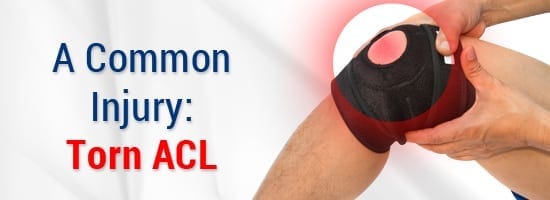
A Common Injury: Torn ACL
The anterior cruciate ligament (ACL) runs diagonally in the middle of the knee joint and helps to provide stability. A tear in the ACL is one of the most common knee injuries, especially for athletes in high demand sports like football, soccer, and basketball.
How do ACL tears occur?
An ACL tear can occur when you stop suddenly, slow down while running, land incorrectly from a jump, suddenly change direction, or even from a direct blow to the knee. In about half of ACL tears, other cartilage and ligaments nearby are damaged as well. ACL tears can range in severity. Partial tears are less common than complete or near complete tears.
What are the symptoms of an ACL tear?
When you first injure your knee, you might hear a popping noise. Swelling and pain is common in the first 24 hours. You might also experience swelling, tenderness, discomfort, and decreased range of motion.
How is an ACL tear treated?
Pain and swelling might improve on its own, but your knee is often still unstable following an ACL tear. This can result in you returning to activities sooner, but actually risking further damage due to instability.
The treatment required for an ACL tear depends on the severity of the injury and your activity level. Patients who do not participate in much physical activity can avoid surgery with methods like bracing and physical therapy to protect the knee from instability and restore function. Patients who are more active may require surgery to rebuild the ligament, often with the assistance of a graft.
Surgery to fix an ACL tear is performed with small incisions and a arthroscope with a minimally invasive method to cut down on recovery time. However, it can still take six months or longer following surgery to be ready to return to sporting activities.







